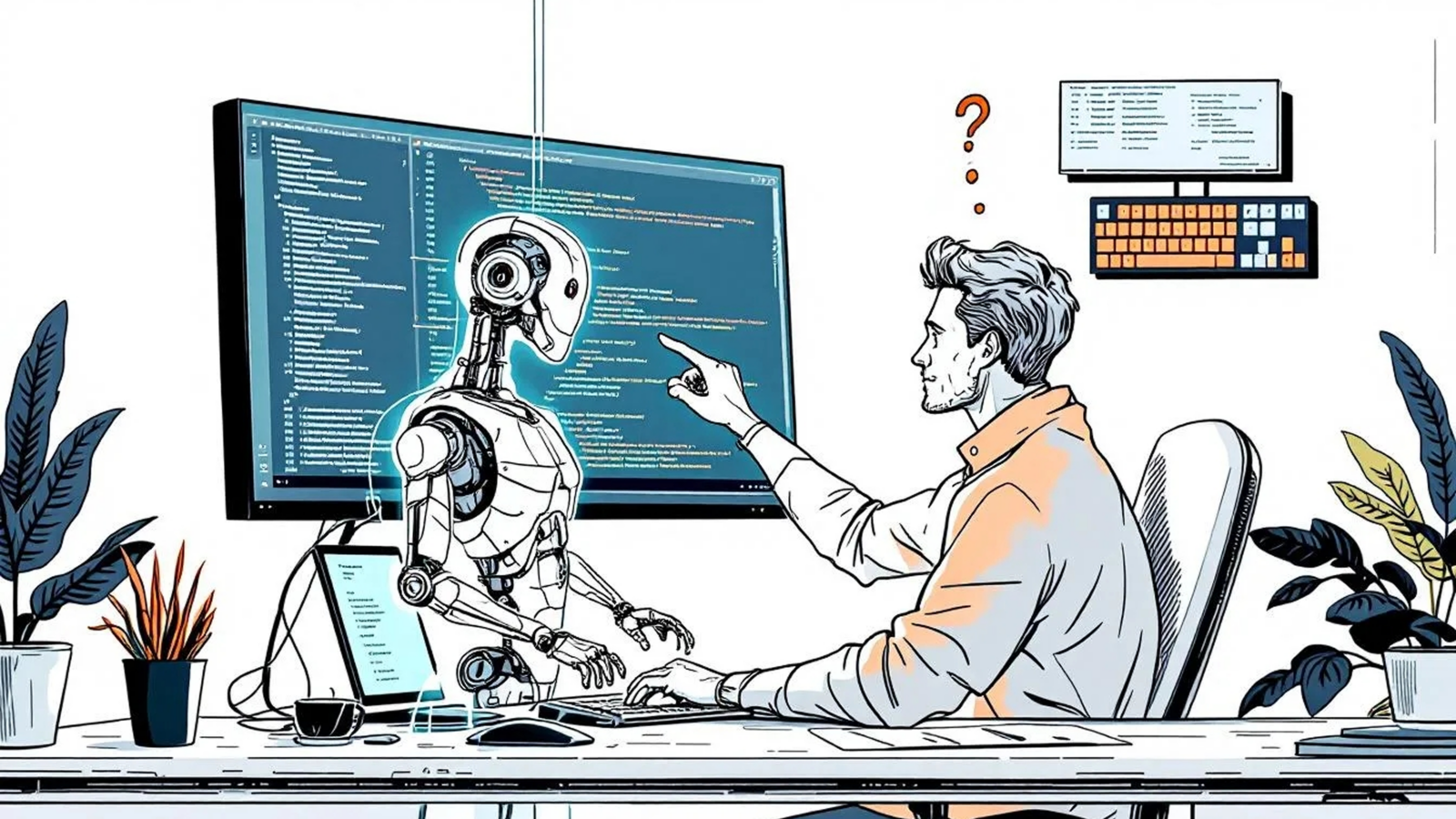AI in development – myths, limits, hard truths

This is Part 2 of our in-depth breakdown on how AI transforms software development workflows at Valletta Software. If you missed the first part, where we cover how AI helps at different development stages from requirements analysis to testing, you can read it here.
Challenges and Limitations of Using AI in Software Development
While the adoption of AI tools offers clear benefits, it also brings new challenges that development teams must carefully manage.
Data Quality Issues
Large language models rely heavily on the data they process. If project documentation, technical requirements, or legacy code are inconsistent or incomplete, the quality of AI-generated outputs suffers. In our experience, to achieve reliable results, we often need to invest time upfront to normalize and improve the initial inputs before introducing them to AI pipelines.
Security and Privacy Risks
Integrating AI into production environments requires addressing potential privacy and security risks. When models interact with sensitive business data or proprietary code, there’s a risk of information leakage, especially with cloud-based services. We mitigate this by implementing strict data sanitization, isolating test environments, and carefully managing API access. For critical systems, we also explore on-premises or private-hosted model deployments.
The Role of Human Oversight
AI is not a replacement for experienced engineers. Human supervision remains essential at key stages. For example, technical leads perform final reviews of AI-generated code and documentation to check for correctness and alignment with project architecture. Automated suggestions still require validation, especially in complex or regulated domains.
The Need to Evolve Development Processes
To truly benefit from AI, teams must adapt their workflows. Simply adding AI tools to existing pipelines does not deliver maximum value. Instead, we have had to redesign certain parts of our development process to fully leverage AI’s strengths, such as automating initial drafts of documentation or test cases while reserving human effort for higher-value validation and optimization. Teams also need to establish new roles and responsibilities (such as AI toolchain owners) and define clear guidelines for using AI ethically and effectively.
Myths and Realities of AI Benefits in Software Development
Public discussions around AI in software development are often filled with bold claims, such as “AI accelerates development by 70%” or “AI will replace entire developer teams.” In practice, our experience paints a more nuanced picture.

First, let’s clarify where real gains occur. We consistently see significant time savings in initial project stages, particularly in preparing technical specifications, analyzing requirements, and generating documentation. Automating the first drafts of specs or test cases can reduce time spent by 40–60%. Similarly, AI-driven comparison of requirement versions cuts what used to be days of manual work down to hours.
In code generation, the benefits depend heavily on context. For boilerplate code (e.g., DTOs, API endpoints, simple integrations), we’ve seen productivity gains of 30-50%. However, for complex business logic or critical modules, human engineers still spend the majority of time ensuring correctness and performance. Here, AI provides assistance but not full automation.
When it comes to refactoring and code analysis, AI delivers substantial value, especially in large legacy systems. We’ve used AI to accelerate the analysis and optimization of stored procedures and monolithic codebases, achieving 10x faster turnaround in some cases. But again, results depend on having expert supervision to verify and guide the process.
It’s important to note that while certain tasks are now faster, AI introduces new tasks into the pipeline. Teams must review AI-generated outputs, set up proper validation processes, and occasionally correct hallucinations or inconsistencies. In addition, integrating AI effectively requires initial investment: training staff, adapting workflows, and building governance practices.
In short, AI does not universally “speed up development by 70%.” Instead, it selectively optimizes certain stages while requiring teams to evolve their processes. The net benefit is very real, but for responsible companies, it comes from a thoughtful, guided approach rather than hype-driven expectations.
Conclusions and Recommendations
Our practical experience shows that AI is no longer just an experimental tool. It is already delivering real, measurable value in software development. But to gain this value, teams need to approach it strategically.
AI works best in specific parts of the development cycle: requirement analysis, documentation, test generation, refactoring of large legacy code, and boilerplate code generation. These stages benefit the most from automation, freeing up engineers to focus on higher-level design and critical business logic.
At the same time, AI brings new responsibilities. Teams must build expertise in validating AI outputs, maintain human oversight through strong tech leads, and evolve development processes to integrate AI tools responsibly.
From our experience, AI-driven development brings the most value to companies with these characteristics:
- Projects with rapidly changing requirements, where AI helps automate change analysis and documentation updates.
- Large legacy systems that require ongoing optimization and refactoring.
- Organizations that want to automate routine tasks to reduce manual effort.
- Companies with limited engineering resources, where AI helps close the gap and scale delivery without scaling headcount linearly.
For these businesses, AI can transform not only the speed of development but also the quality and predictability of engineering output when guided by experienced professionals.
Final Thoughts
At Valletta Software, we continue to invest in AI because it is clear that this is the direction the industry is heading. We see AI as an assistant, not a replacement, for engineers. The combination of AI tools with expert human oversight delivers the best outcomes for clients.
Looking ahead, our next steps include further automating cross-stage workflows (linking requirement change analysis directly to backlog updates), improving AI explainability in code refactoring tasks, and experimenting with agent-based architectures for even more flexible automation.
If you want to see how we’ve already applied these principles to transform our own development process, take a look at this story.
AI is not magic. It is a tool. But used thoughtfully, it can reshape software engineering. And we’re excited to keep pushing these capabilities forward for our clients.